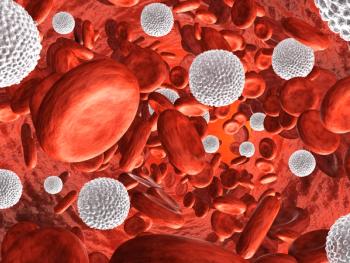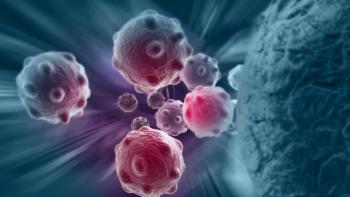
New Study Offers Insights into Tyrosine Kinase Inhibition in AML Patients
A study by German investigators is elucidating the role of tyrosine kinase inhibitors in targeting FLT3 in acute myeloid leukemia.
A recent investigation by German researchers is suggesting a new path for improving outcomes in patients with acute myeloid leukemia (AML). In an
The researchers found that treatment of FLT3-mutated AML using TKIs in combination with FLT3-targeting antibodies may be more efficient than either of the two agents alone. The team had previously found that upon mutation the receptor tyrosine kinase FLT3 often disappears from the cell surface. This chain of events hinders FLT3-directed immunotherapy.
“Interestingly, tyrosine kinase inhibition brings mutated FLT3 to the cell surface. Indeed, we confirmed that FLT3-inhibitors render mutated FLT3 accessible to therapeutic antibodies. Although it was expected that combinatorial treatment would kill more leukemia cells than single agent therapy, remarkably the result was beyond the calculated additive effect consistent with a synergistic interaction of the two drugs,” said study investigator Philipp Greif, German Cancer Consortium (DKTK) junior group leader at Munich University Hospital (LMU), Munich, Germany.
He said it was previously shown anecdotally that TKI increases cell surface expression of FLT3. However, the observation was limited to only a few patients. In contrast, scientists from DKTK, Munich University Hospital, and Tübingen University Hospital now have studied this effect systematically using several preclinical models, including AML cell lines, primary patient samples, and xenografts. The researchers were able to evaluate the interaction of tyrosine kinase inhibition and FLT3-directed immunotherapy.
“Facing numerous new drugs designed to target cancer drivers in a specific manner, it is important to comprehensively study their effects on the cellular level as well as their interactions. FLT3 inhibitors, initially designed to disturb leukemia cell growth through disruption of FLT3 signaling, have an important side effect on the subcellular localization of FLT3, which has turned out to play an unexpected role for the interaction with FLT3 antibodies,” Greif told OncoTherapy Network.
When the researchers analyzed the effect of TKIs on the localization of the FLT3 receptor and its mutants, they found that TKI treatment increased the surface expression through upregulation of FLT3 as well as the upregulation of glycosylation of FLT3-ITD and FLT3-D835Y.
According to the researchers, for about a third of AML patients, the cause of the uncontrolled cell division of the malignant cells is a mutation of the growth receptor FLT3. However, Greif said immune therapy solely with the FLT3 antibody is not always successful. He said in some cases the FLT3 receptor has mutated so much that it has largely disappeared from the surface of the leukemia cell and is no longer accessible to the antibody.
Both FLT3 inhibitors and FLT3 antibodies are quite advanced in clinical trials. Recently the FLT3 inhibitor midostaurin was approved for use in combination with standard chemotherapy. Follow-up studies now will be conducted to determine which of the available inhibitors are the most suitable to be combined with the FLT3-based immune therapy.
Newsletter
Stay up to date on recent advances in the multidisciplinary approach to cancer.

















































































